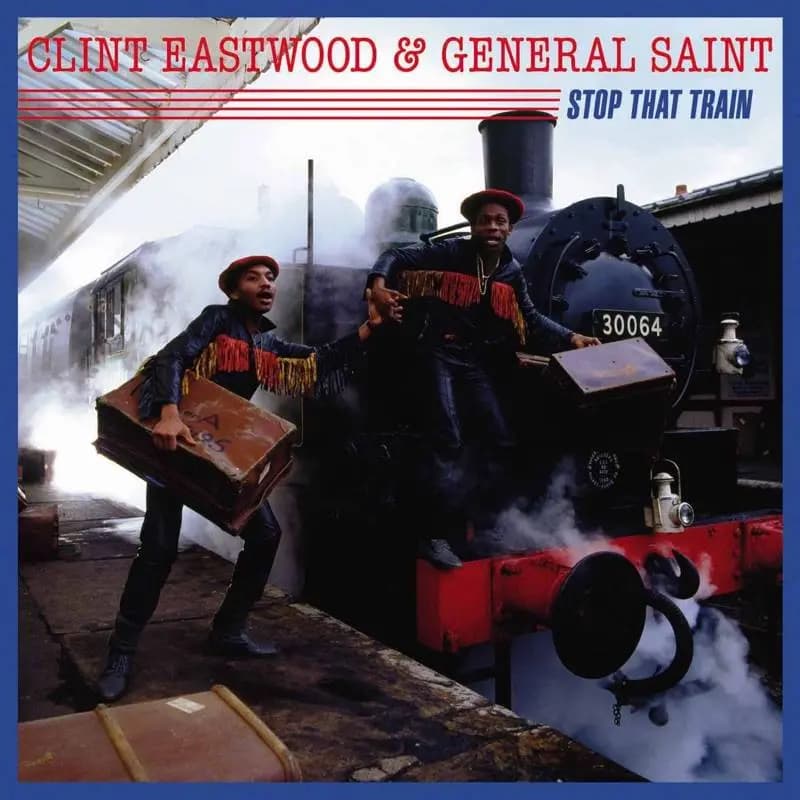
A Desperate Plea: An Urgent Cry to Halt Time and Reclaim a Fading Love
Clint Eastwood‘s surprising yet utterly charming venture into the world of music with “Stop That Train” offers a unique glimpse into the multifaceted talent of a Hollywood icon. While primarily renowned for his stoic on-screen presence and masterful direction, Eastwood’s foray into music is a delightful footnote in his illustrious career. Released as a single in 1962, this intriguing track achieved a modest but respectable showing, reaching number 35 on the Billboard Hot 100 pop chart, demonstrating that his star power extended beyond the silver screen. It was a standout track from his 1962 album, “Rawhide’s Clint Eastwood Sings Cowboy Favorites” (which didn’t chart on the main Billboard 200 but was well-received by fans of Western music). “Stop That Train” quickly became a beloved curiosity for fans who appreciated Eastwood’s sincere, if somewhat unpolished, vocal performance and its catchy, traditional country-pop melody. It further solidified Eastwood‘s burgeoning celebrity, appealing to millions who were captivated by his burgeoning reputation and his unexpected leap into the recording studio.
The story behind “Stop That Train” is rooted in the rich tradition of American folk and country music, though it gained wider recognition through its association with Eastwood. The song is a cover of a track originally titled “Train of Love,” written by Johnny Burnette and Dorsey Burnette, and first released by Johnny Burnette in 1957. It’s a classic example of a train song, a popular motif in American music often used to symbolize journeys, change, or the passage of time. For Clint Eastwood, recording this song was part of a larger effort by Columbia Records to capitalize on his rising fame from the popular TV Western series Rawhide. Eastwood was already a recognizable face, and the idea was to leverage his cowboy persona into a music career, similar to what many other Western stars had done. While Eastwood’s singing voice might not have been as polished as some of his contemporaries, his delivery on “Stop That Train” is sincere and earnest, reflecting the simplicity and directness often found in traditional country and folk tunes. The recording captures a moment in time when a burgeoning film star was exploring different facets of entertainment, offering a charming, if brief, musical detour from his legendary acting career. The track, with its recognizable title, became a memorable piece of his early non-acting ventures, adding an interesting layer to his expansive public image.
The meaning of “Stop That Train” is a desperate and urgent plea from a lover witnessing their beloved departing, symbolizing an agonizing desire to halt the passage of time and reverse an inevitable separation. It’s a song about the profound pain of imminent loss and the desperate, almost futile, wish to rewind moments or stop events that lead to heartbreak. The train itself serves as a powerful metaphor for unstoppable fate, the relentless march of time, or the unstoppable journey of a relationship towards its end. The lyrics convey a raw sense of panic and a yearning for things to remain as they were, or to simply prevent the painful goodbye from occurring. The repeated cry to “stop that train” is both a literal and a symbolic entreaty to control circumstances beyond one’s power. Lines like “Stop that train, I’m getting off / Before I lose the girl I love” perfectly capture this blend of frantic desperation and underlying sorrow. It speaks to the universal human experience of confronting an unwelcome ending, the agonizing feeling of powerlessness in the face of inevitable change, and the deep emotional turmoil of watching a cherished connection disappear into the distance, making it a timeless anthem for the heartbreak of farewells.
Clint Eastwood‘s vocal performance on “Stop That Train” is, much like his early acting roles, understated but effective. His baritone voice is smooth and possesses a pleasant, if not technically virtuosic, quality. He delivers the lyrics with a straightforward earnestness, leaning into the song’s country-pop sensibility. While he doesn’t employ the dramatic vocal flourishes of a trained singer, his sincere interpretation gives the song a charming authenticity that resonates with the listener. The instrumentation is typical of early 1960s country-pop, featuring a driving rhythm, bright acoustic guitars, and a subtle steel guitar that adds a touch of longing. The arrangement is simple and direct, allowing the catchy melody and the song’s narrative to remain at the forefront. The production is clean and unfussy, capturing the sound of the era. This track serves as a fascinating historical artifact, showcasing a burgeoning star’s willingness to experiment outside his primary medium, proving that even a legendary actor could carry a tune and deliver a memorable, albeit modest, hit.
Listening to “Stop That Train” today evokes a particular kind of delightful nostalgia, transporting us back to a simpler time in pop culture when television stars often crossed over into music, and when the Western genre held a strong, iconic grip on the public imagination. It reminds us of Clint Eastwood‘s surprising foray into the recording studio and the earnest charm he brought to his musical endeavors. For those of us who recall its presence from our youth, whether from vinyl records or the occasional radio play, this song remains a cherished curiosity, a timeless reminder of a Hollywood legend’s unexpected detour into song. It’s a melody that, even after all these years, continues to chug along, gently reminding us of youthful heartbreak and the timeless wish to “stop that train” and hold onto what we cherish.